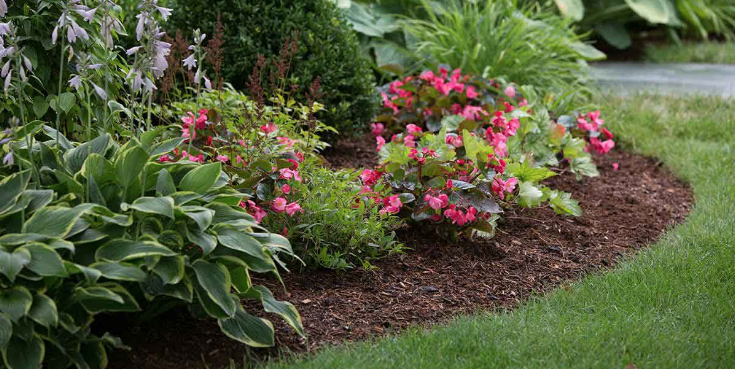
If you already love to sink your hands elbow-deep into the good earth, your coping skills for dealing with the stress and unpredictability of the coronavirus quarantine are far superior to many. For those of you still up to your eyeballs in harrowing news reports and negative social media, put down the remote and back away from the computer—it’s time to go outside and get some perspective.
Whether you’re a beginner or a veteran or somewhere in between, there are things you can do in your garden now while we are minimizing our worldly contact that will help you gain the perspective you need to make the coming months more manageable—and the end of our confinement more colorful and beautiful!
Start by stepping out your door. As long as your beds aren’t still waterlogged, you’re ready to start. Apartment dweller or condo owner? Container gardens are great! (You might also use some of this indoor time researching “community gardens near me” to see if there’s a 10 x 10 plot you can snag for growing vegetables and ornamentals later this year.)
Need pots, supplies, or plants? Some states have declared their plant nurseries essential businesses, so give them a call. Many allow you to shop and pay online, and then pick up your purchases curbside at their business. If you can support your local plant nurseries this way, they would really appreciate the business.
Inventory Stuff
Here’s a not-too-strenuous introductory activity that won’t leave your back strained or your knees sore—and doing it now will save you valuable time as the growing season progresses. Inspect your equipment. Are you hand tools bent or blunted? Does your wheelbarrow have a broken handle or flat tire? If you’re a container gardener, do your pots have saucers underneath to catch water and soil run-off? (Your downstairs neighbor will thank you for figuring that out.) Shipping times on these types of items are running longer than usual, so order now so you can be prepared.
Weed
Get down on your hands and knees and start pulling. Anything you can yank out now means one less thing that can get a root-hold and take over your yard when the sun comes out in earnest in a few months.
Compost
For many gardeners, this is something that’s always been “on the list” but never quite gets done. Because there’s nothing like rich, crumbling compost for amending your soil, why not give it a try? Things like coffee grounds, eggshells, dried leaves, twigs, and grass clippings are great—even shredded newspapers are fair game. Just aim for a balanced mix of nitrogen (green) items like your kitchen scraps and lawn clippings, and carbon items like shredded newspapers and dried leaves. Layer everything on the ground or in a bin and moisten without soaking it. Turn it frequently with a shovel or pitchfork to help it decompose.
Layer Mulch
If you’re an online shopper, you have a head start if you have some broken-down, cardboard shipping boxes laying around. Just cut the flattened cardboard to fit a prepared bed, and lay it down in a thick layer. Moisten the cardboard and tamp it down well. Begin to add layers of compost-material—things like wood chips, dried leaves, vegetable trimmings, or weed-free garden waste—in layers, watering in between each, for a total thickness of 6-8 inches. Top with an additional four inches of mulch.
Feed
See if you can get ahold of a few bags of aged manure or other organic soil amendments. Shovel it on to your beds, work it in, and water well. Let everything “cook” for at least two weeks before planting. This powerful mix enriches your soil, but it can burn tender root systems.
Plant Herbs
Got a sunny spot outside your kitchen door or maybe just a light-filled windowsill? If so, you’ve got the perfect spot for an herb garden. Choose herbs like basil, sage, rosemary, and certain varieties of lavender. If you plant mint, consider putting it in a pot—its root system is invasive enough to take over your entire space.
Organize a Plant Swap
After you’ve divided your plants or ordered from the garden center, you may find you have more than what you need. Figure out how you and your friends and neighbors can safely swap vegetable and fruit plants, herbs, and ornamental cuttings to enhance each other’s garden spaces.
Water Stations
Gardens planted in areas with hot, dry summers benefit from the placement of “deep water” stations. Try burying a couple of 5-gallon nursery buckets with holes in the bottom throughout your garden beds, letting the top protrude above the soil by 3–4 inches. You can easily plant around them this spring. As the temperatures rise and soils begin to dry out, you can fill the buckets a few times a week with water. This type of “deep watering” allows roots to penetrate deeper into the ground where they are more likely to thrive in hot, dry weather.
Cast Shade
Build a simple PVC-pipe-and-fabric frame to shield your plants facing south or west at the hottest part of the day. If you use filtering cloth, you may even be able to plant vegetables and ornamentals that don’t typically thrive in your zone or exposure.
Do Projects
With everyone at home, this is the perfect time to dust off the outdoor décor and create a beautiful oasis to extend your living space. Lighting, mats, cushions, and pottery accents combine with the fruits of your garden labors to create a natural, calming space.
While all this “home time” is being mandated, it’s easy to lose track of the gift it is in many ways. Take advantage of it now to get a jump on some of your gardening chores so you don’t find yourself saying “I wish I had a few of those ‘quarantine days’ back!” when we are back some day to the jam-packed days that fill our normal lives.
